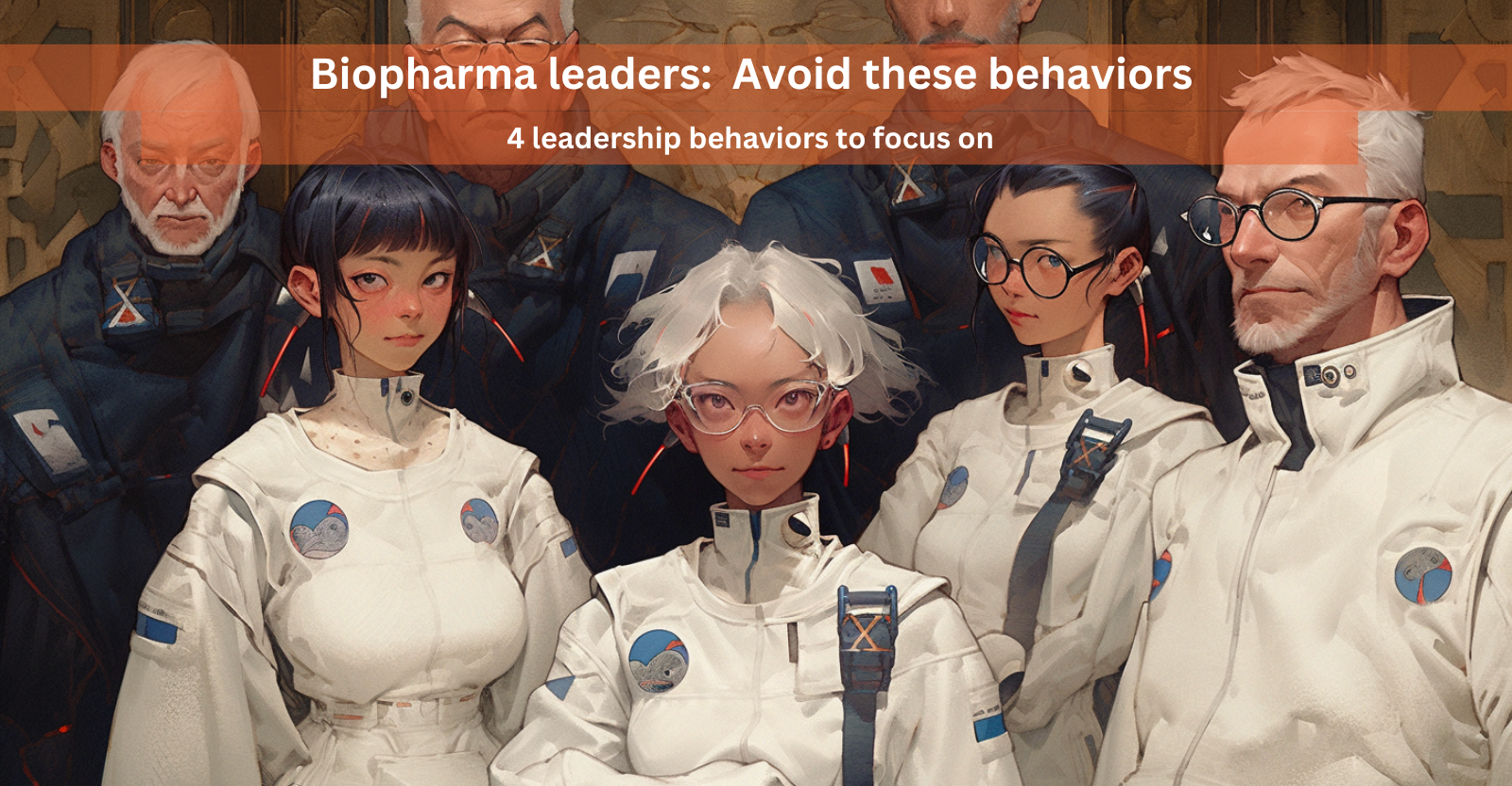Have you ever wondered how to ignite innovation within your team, attract innovative minds, or take your leadership approach to the next level? You wouldn’t be where you are if you didn’t at some level because this curiosity is shared by many key leaders, especially in the pharmaceutical industry, where innovation is the cornerstone of success. While Steve Jobs or Jeff Bezos’ successes are inspiring, it’s equally important to uncover the innovation strategies used by mavericks in our field.
For this article, we reviewed the practices of renowned innovators, including those who’ve transformed the pharmaceutical landscape, to find insights into their unique thinking patterns and share them with you.

Key Discovery: Personal Involvement
Contrary to widespread practice where executives play a facilitative role, leaders at highly innovative companies dive into the innovation process themselves.
Consider the case of Dr. Frances Collins, who, while leading the National Institutes of Health, was deeply involved in the research and development process, contributing to significant medical breakthroughs and the rapid response to the pandemic.

How Do They Do It? Five Discovery Skills
We discovered that there are five critical skills that differentiate creative executives: associating, questioning, observing, experimenting, and networking. What separates great from good leaders in pharma is that great leaders dedicate significantly more time to these activities than their counterparts.

- Associating: The Connection Superpower
Innovative leaders are very capable when it comes to forming connections between seemingly unrelated concepts.
A leader like Dr. Carl June known for his work in developing CAR T-cell therapy, exemplifies this by linking immunology with genetic engineering, leading to revolutionary cancer treatments. “There will be a lot of cell therapy work in autoimmune disease, regenerative medicine, aging diseases, and even dementia and infectious diseases, “says Dr. June. “I think in the next couple of decades, we’ll continue to see progress in CAR T cell therapy for more cancer types—and see exponentially more clinical trials coming on board for these other disease areas.”

- Questioning: The Art of Challenging the Status Quo
Innovators consistently challenge the status quo and the norms of today by asking probing questions.
A perfect example of this way of thinking was demonstrated by Dr. Barry Marshall, the Australian scientist who upset the medical dogma of the day by discovering the Helicobacter pylori bacterium that causes stomach inflammation, ulcers and cancer. Dr. Marshall, as you may recall, went on to win the 2005 Nobel Prize for Physiology or Medicine for the discovery.

- Observing: Seeing the World Differently
As simple as it may seem, paying close attention to what is happening around you can uncover new insights.
A young Akira Endo, surprised by the large number of overweight people in America and incidence of heart attack compared to those in Japan. He applied his interest of fungi like molds and mushrooms that produce antibiotics to study metabolites that inhibited enzymes involved in cholesterol synthesis. This played a key role in creating the first cholesterol-lowering statin, simvastatin, which has had a significant impact on the way cardiovascular disease is treated today.

- Experimenting: The Lab Coat Approach
Like scientists, great leaders of innovation embrace the process of experimentation to advance bold projects.
Pfizer’s bold move in redirecting resources to develop the COVID-19 vaccine in record time is a testament to this approach. “It took a moon-shot challenge, out-of-the-box thinking, intercompany cooperation, liberation from bureaucracy, and, most of all, hard work from everyone at Pfizer and BioNTech to accomplish what we did”, said Albert Bourla, Pfizer CEO.

- Networking: Expanding Your Innovation Circle
Great leaders actively seek perspectives from a wide range of stakeholders with differing academic backgrounds, professional experiences, ages, and even thinking styles to find ideas and solutions that they might not have considered otherwise.
As in the previous example with the collaboration between BioNTech and Pfizer, combining expertise and diverse teams helped to develop a vaccine more quickly than anyone ever had ever done before, and though ideally the goal was to complete the vaccine within six months, it was completed in eight.

Cultivating Your Own Innovator’s DNA
As a leader, you already know you must look at current trends as well as come up with original approaches that have the potential to support newsworthy innovation. This is nothing new; however, what might not be so apparent is our industry, because of its emphasis on scientific discovery, is fertile soil and a perfect setting for people to develop and exercise an innovation-driven mindset. Practice this muscle. Learn, collaborate, take risks and increase your tolerance to fail, network like you need a job and leverage all of the wonderful tools technology has given you and you soon find that your approach is what others are referring to as innovative.

Leading Innovation in Pharma
Innovation comes from attending to and encouraging an environment that favors creativity to grow big ideas. You are at the helm and are responsible for where this ship goes, and your leadership has the potential to either impact whether your team is responsible for creating the next big leap in healthcare or is simply following it.
As told by the transformational leadership of former Merck CEO, Ken Frazier who gained the respect of his employees, shareholders, and the broader community not only through the company’s performance during his 11-year tenure but through his handling of several tests of his leadership, “Leadership is a team sport. When a company is successful, the CEO gets credit for what I call the big moments, but leadership is in the many small, quiet moments with the team.”









